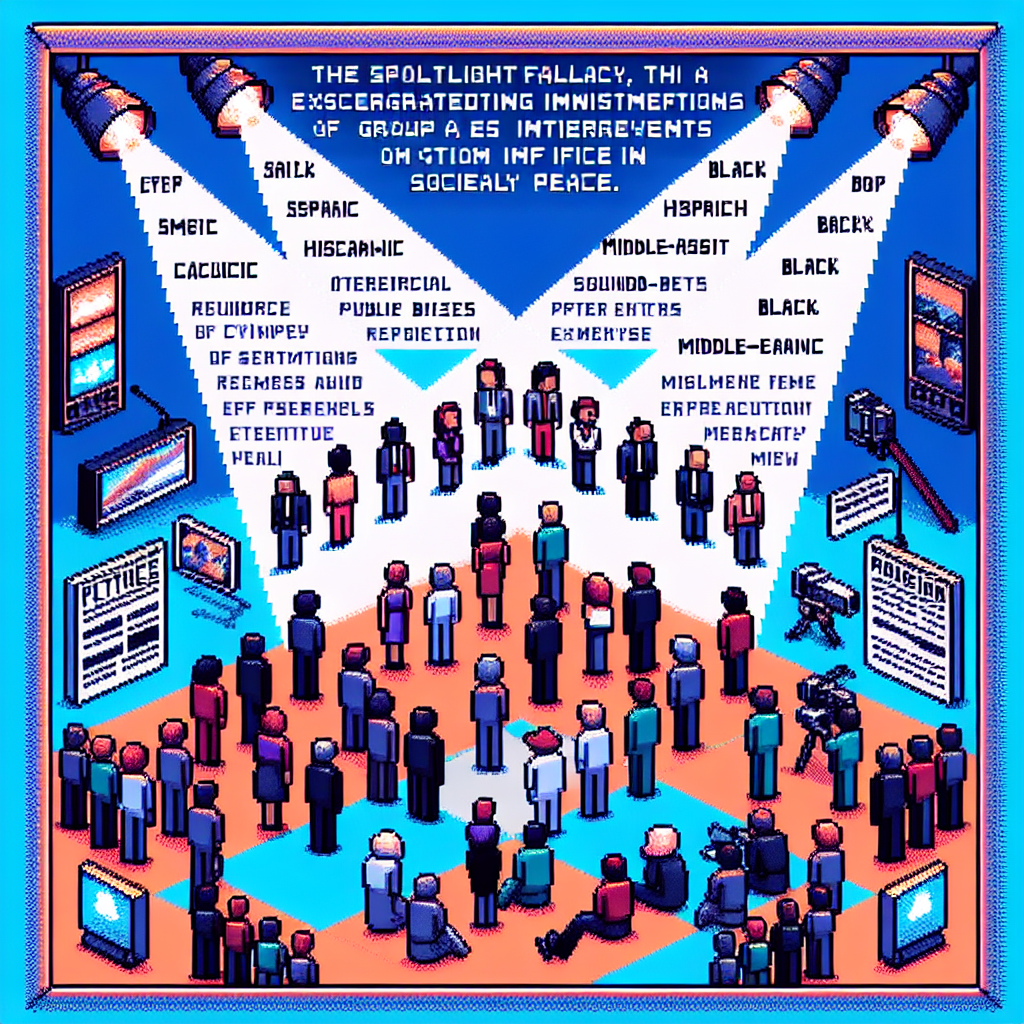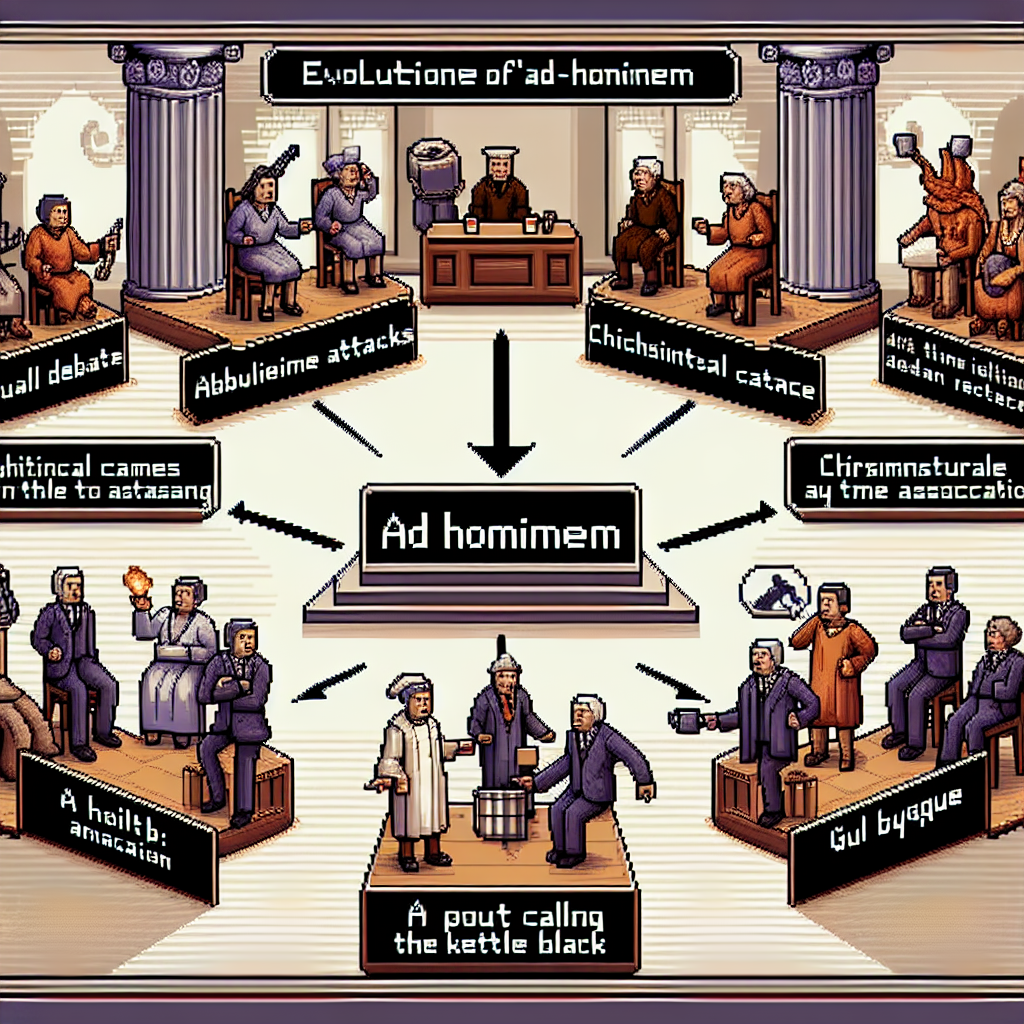Spotlight Fallacy: Understanding Its Roots and Impacts
Definition of the Spotlight Fallacy
The Spotlight Fallacy occurs when people assume that the coverage provided by the media or attention given to a particular issue exemplifies the norm, thereby skewing public perception. It is significant, especially in today’s information age, to grasp its full meaning and implications.
Importance of Understanding the Spotlight Fallacy
Understanding this fallacy is crucial because it affects how society views various groups and issues, often leading to misinformation. Additionally, distinguishing the Spotlight Fallacy from reality helps in fostering more informed and balanced opinions.
How the Spotlight Fallacy Relates to Media Representation
Media representation plays a pivotal role in the Spotlight Fallacy, shaping not only what people know but also what they believe about the world around them. During periods of intense media coverage, certain narratives become amplified. Consequently, society may form skewed perceptions, believing such narratives to represent broader truths rather than isolated incidents.
Understanding the Psychology Behind the Spotlight Fallacy
Cognitive Bias and its Impact
The Spotlight Fallacy arises largely because of cognitive biases, which are systematic patterns of deviation from norm or rationality in judgment. People often generalize based on limited instances, leading them to unfounded conclusions. Despite being aware of our biases, they can still significantly influence our perceptions.
Group Dynamics and Stereotyping
Additionally, group dynamics play a crucial role in perpetuating the Spotlight Fallacy. Within group settings, individuals tend to reinforce each other’s perspectives, which often leads to stereotyping. This is particularly concerning during instances where certain narratives become dominant, overshadowing alternative viewpoints.
Influence of Repetitive Narratives
Because repetitive narratives hold power, they can further entrench the Spotlight Fallacy. Over time, consistent exposure to particular portrayals can embed ideas into the public consciousness. As a result, challenging these narratives requires sustained efforts that counterbalance these ingrained notions, highlighting the need for diverse and accurate media representation.
Spotlight Fallacy in Historical Context
Representation of Minority Groups in Media
The Spotlight Fallacy has deeply influenced how minority groups are portrayed in media. Before the digital age, these communities were often shown in a limited and biased light because different narratives just didn’t get much airtime. As a result, stereotypes were reinforced, and it was challenging for individuals from these groups to gain fair representation. Despite some progress, this limited perspective persists in various forms today.
The Role of Media in Shaping Public Perception
During different historical periods, media outlets have played a significant role in shaping public perception. Additionaly, they often spotlight selective stories that appeal to their audience’s preconceptions, unintentionally perpetuating the Spotlight Fallacy. This has influenced societal norms and shaped the understanding of diverse cultures over time.
Long-term Effects on Communities
These skewed depictions have had long-term effects on communities. Policies have emerged from these misrepresentations that deeply affected lives. Current communities strive for balance because they want fair treatment and accurate representation.
The Role of Media in Perpetuating the Spotlight Fallacy
Media’s Influence on Public Opinion
The Spotlight Fallacy heavily relies on the media’s ability to shape public perceptions. By focusing on specific events, media outlets can inadvertently exaggerate the importance of certain stories. This often occurs because the media seeks to capture attention, sometimes at the expense of balanced reporting. Consequently, individuals may mistakenly believe these stories represent a larger trend.
The Power of Headlines and Soundbites
Headlines and soundbites play a crucial role during the dissemination of information. When these elements are selectively crafted, they emphasize particular aspects of a story, which can lead to misunderstanding. Additionally, the brevity of soundbites often fails to convey the complexity of issues, thus reinforcing the Spotlight Fallacy.
Analysis of Biased Reporting Practices
During the analysis of reporting practices, it’s essential to acknowledge the bias inherent in how stories are selected and presented. Despite efforts for neutrality, biases often seep into reportage. By prioritizing sensationalism over substance, the media perpetuates preconceived notions, thereby influencing public opinion and fortifying the fallacy.
Case Studies: Analyzing Real-world Manifestations and Solutions to the Spotlight Fallacy
Addressing Media Misrepresentation
The issue of misrepresentation due to the Spotlight Fallacy becomes evident in recent news stories. Before solutions can be implemented, recognizing the patterns is crucial. Additional strategies require media outlets to adopt a balanced approach when crafting headlines and soundbites; this helps mitigate biased narratives. Implementing stringent editorial standards ensures diverse perspectives are included, thus preventing skewed representations.
The Role of Social Media Platforms
Furthermore, social media platforms play a significant role in perpetuating the Spotlight Fallacy. Because algorithms prioritize sensational content, they often amplify distorted views. Encouraging platforms to design algorithms that promote a broader range of narratives can significantly reduce misrepresentation. Despite these challenges, positive changes are possible with intentional efforts.
Comparative Analysis and Media Literacy
Comparative analysis across different media outlets shows varied representation of the same event. Encouraging critical thinking among audiences is essential. By promoting media literacy, individuals can better discern biases and seek out multiple sources. This empowers the public to question narratives, thereby reducing the spotlight fallacy’s impact during news consumption.
Combating the Spotlight Fallacy: Effective Solutions
Promoting Awareness and Education
Addressing the Spotlight Fallacy requires a multi-faceted approach, emphasizing the need for both awareness and education. Educational institutions should incorporate media literacy programs that highlight how cognitive biases affect public perception. Critical thinking skills can be fostered through workshops and discussions that explore how repetitive narratives can distort reality. Additionally, media platforms can partner with educators to distribute resources that explain the nuances of the Spotlight Fallacy.
Encouraging Diverse Narratives
To dismantle stereotypes perpetuated by the Spotlight Fallacy, the media must embrace and promote diverse narratives. This effort involves including perspectives from a variety of groups, which helps combat the dominant, narrow viewpoints often seen in media portrayals. During news coverage, offering multiple viewpoints not only enriches the content but also provides a more balanced understanding of events and issues. Supporting independent media outlets can also contribute to this diversity.
Spotlight Fallacy in Modern Media: A Case Study
Case Study Overview
In a recent examination of the media’s portrayal of certain minority groups, a particular news outlet repeatedly highlighted instances of crime involving specific communities. This approach exemplified the Spotlight Fallacy, where disproportionate attention to particular narratives skews public perception. Consequently, these communities faced heightened scrutiny and stereotyping.
Real-world Manifestations
Despite the broader context of diverse contributions from these groups, the coverage predominantly focused on negative incidents. Additional analysis revealed that this thematic narrative significantly influenced public opinion, fostering unjust biases. Moreover, during the study period, social media platforms amplified these narratives, resulting in widespread misinformation.
Proposed Solution
To combat the enduring effects of the Spotlight Fallacy, it is essential to promote media literacy and critical thinking. Encouraging individuals to critically evaluate media content can help counterbalance biased representations. Furthermore, balanced and diverse narratives should be actively encouraged within journalistic practices. Educational campaigns focusing on awareness and understanding of media biases will serve as foundational steps in mitigating such negative impacts.


